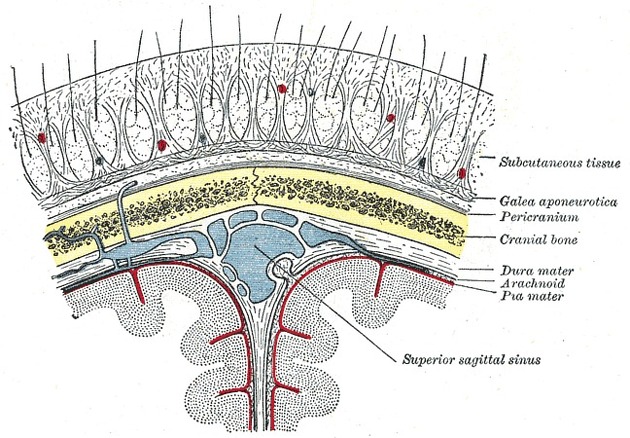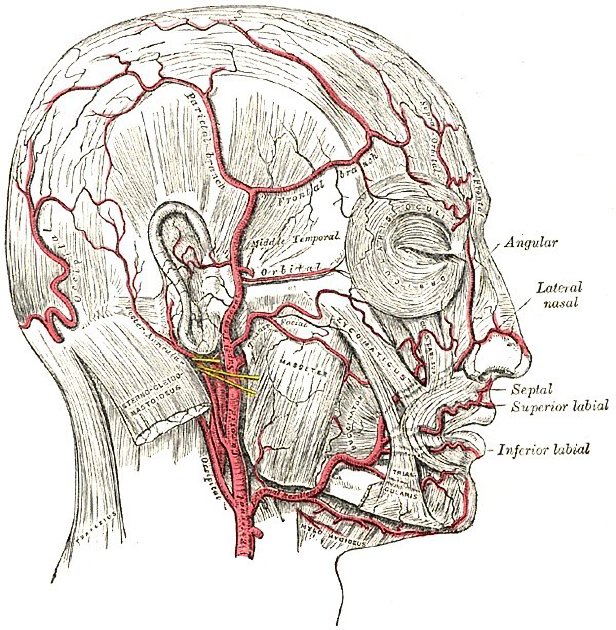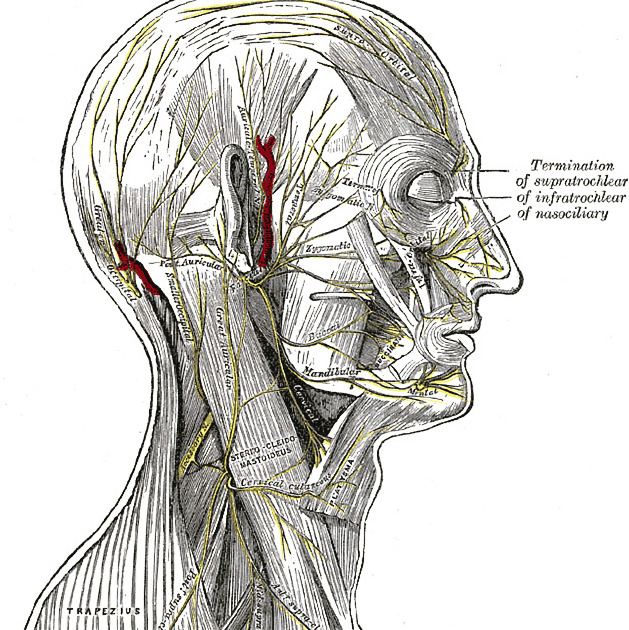scalp




The scalp is the skin and subcutaneous tissue covering the neurocranium. It is composed of five layers and has a rich vascular supply which explains why it bleeds profusely and heals well.
Layers
The scalp is composed of five layers which are easily remembered with this mnemonic. From external to internal the layers are:
- usually covered in hair
- thicker over the occiput
- rich arterial supply and venolymphatic drainage
- a thick layer which has a rich vascular supply
- contains numerous cutaneous nerves
- strong aponeurosis that allows attachment for muscles of the scalp (occipitofrontalis, temporoparietalis and superior auricular muscles), all innervated by the facial nerve
- a sponge-like layer of areolar tissue which allows the free movement of the first three layers over the underlying pericranium and skull
- being so loose it is a potential space for collections and hematomas
- a dense layer of fibrous connective tissue that is the external periosteum of the neurocranium (firmly attached)
- extends into the cranial sutures
Boundaries
- posterior: superior nuchal lines of the occipital bone
- anterior: supraorbital margins of the frontal bone
- lateral: zygomas
Arterial supply
Numerous arteries supply the scalp, contributing to its rich vascular supply.
The arteries arise from both the internal and external carotid circulations:
- external carotid artery branches
- internal carotid artery branches
Venous drainage
- venous drainage is via veins that correspond to the named arteries and via emissary veins to dural venous sinuses
Lymphatic drainage
Like the face, the scalp does not have lymph nodes. Lymph drains via small lymphatic channels to the submandibular, parotid, mastoid and occipital nodes. These form a collar of nodes at the junction of the head and neck.
Innervation
Numerous cutaneous nerves supply sensation to the scalp depending on the location:
- anterior scalp (branches of the ophthalmic division of the trigeminal nerve)
- superior scalp towards the vertex
- posterior scalp
- greater occipital nerve (from C2)
- third occipital nerve (C3)
- lateral scalp (from anterior to posterior)
- zygomaticotemporal nerve
- zygomaticofacial nerve
- auriculotemporal nerve (branch of the mandibular division of trigeminal nerve)
- lesser occipital nerve (C2, C3 from the cervical plexus)
The muscles of the scalp (see above) are considered muscles of facial expression and therefore are all innervated by the facial nerve.
Related pathology
Siehe auch:
und weiter:

